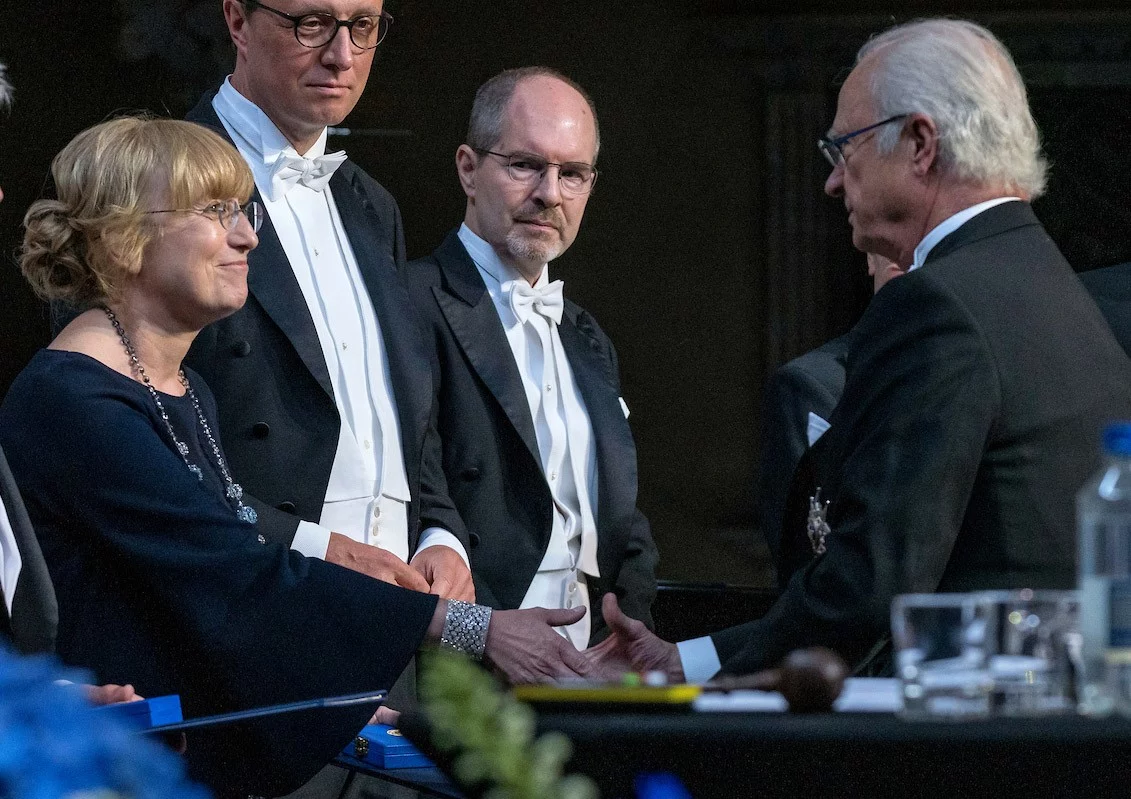News

Bergant, V., Yamada, S., Grass, V., Tsukamoto, Y., Lavacca, T., Krey, K., Mühlhofer, M.T., Wittmann, S., Ensser, A., Herrmann, A., Vom Hemdt, A., Tomita, Y., Matsuyama, S., Hirokawa, T., Huang, Y., Piras, A., Jakwerth, C.A., Oelsner, M., Thieme, S., Graf, A., Krebs, S., Blum, H., Kümmerer, B.M., Stukalov, A., Schmidt-Weber, C.B., Igarashi, M., Gramberg, T., Pichlmair, A., and Kato, H.
(IMPRS-LS predocs are in bold)
EMBO J, 2022, e111608.
doi: 10.15252/embj.2022111608
Attenuation of SARS-CoV-2 replication and associated inflammation by concomitant targeting of viral and host cap 2'-O-ribose methyltransferases
The SARS-CoV-2 infection cycle is a multistage process that relies on functional interactions between the host and the pathogen. Here, we repurposed antiviral drugs against both viral and host enzymes to pharmaceutically block methylation of the viral RNA 2'-O-ribose cap needed for viral immune escape. We find that the host cap 2'-O-ribose methyltransferase MTr1 can compensate for loss of viral NSP16 methyltransferase in facilitating virus replication. Concomitant inhibition of MTr1 and NSP16 efficiently suppresses SARS-CoV-2 replication. Using in silico target-based drug screening, we identify a bispecific MTr1/NSP16 inhibitor with anti-SARS-CoV-2 activity in vitro and in vivo but with unfavorable side effects. We further show antiviral activity of inhibitors that target independent stages of the host SAM cycle providing the methyltransferase co-substrate. In particular, the adenosylhomocysteinase (AHCY) inhibitor DZNep is antiviral in in vitro, in ex vivo, and in a mouse infection model and synergizes with existing COVID-19 treatments. Moreover, DZNep exhibits a strong immunomodulatory effect curbing infection-induced hyperinflammation and reduces lung fibrosis markers ex vivo. Thus, multispecific and metabolic MTase inhibitors constitute yet unexplored treatment options against COVID-19.

Emslander, Q., Vogele, K., Braun, P., Stender, J., Willy, C., Joppich, M., Hammerl, J.A., Abele, M., Meng, C., Pichlmair, A., Ludwig, C., Bugert, J.J., Simmel, F.C., and Westmeyer, G.G.
Cell Chem Biol, 2022, online ahead of print.
doi: 10.1016/j.chembiol.2022.06.003
Cell-free production of personalized therapeutic phages targeting multidrug-resistant bacteria
Bacteriophages are potent therapeutics against biohazardous bacteria, which rapidly develop multidrug resistance. However, routine administration of phage therapy is hampered by a lack of rapid production, safe bioengineering, and detailed characterization of phages. Thus, we demonstrate a comprehensive cell-free platform for personalized production, transient engineering, and proteomic characterization of a broad spectrum of phages. Using mass spectrometry, we validated hypothetical and non-structural proteins and could also monitor the protein expression during phage assembly. Notably, a few microliters of a one-pot reaction produced effective doses of phages against enteroaggregative Escherichia coli (EAEC), Yersinia pestis, and Klebsiella pneumoniae. By co-expressing suitable host factors, we could extend the range of cell-free production to phages targeting gram-positive bacteria. We further introduce a non-genomic phage engineering method, which adds functionalities for only one replication cycle. In summary, we expect this cell-free methodology to foster reverse and forward phage engineering and customized production of clinical-grade bacteriophages.

The Gregori Aminoff Prize was awarded at the Royal Swedish Academy of Science's annual celebration. This year's awardees are RNA researchers Elena Conti, Patrick Cramer and Seth Darst. Conti, director and head of the research department "Structural Cell Biology" at the Max Planck Institute (MPI) of Biochemistry in Martinsried, Germany, together with her colleagues from the MPI for Multidisciplinary Sciences in Göttingen, Germany, and the Rockefeller University in New York, USA, studied the cellular systems for RNA synthesis and degradation, the two processes that together regulate the lifetime of RNA molecules. RNAs are key macromolecules that are found in all living organisms and in many viruses. Conti's work focuses on the quality control and degradation of RNA. She has studied how RNA is transformed from non-functional to functional molecules, and how, finally, they are broken down when they are no longer needed or when they are found to be defective. She has focused on the exosome, which performs several of these tasks. Her results have been highly influential and encouraged many other researchers to try new approaches.

J.C.O'Neill*, A.C., Uzbas*, F., Antognolli*, G., Merino*, F., Draganova, K., Jäck, A., Zhang, S., Pedini, G., Schessner, J.P., Cramer, K., Schepers, A., Metzger, F., Esgleas, M., Smialowski, P., Guerrini, R., Falk, S., Feederle, R., Freytag, S., Wang, Z., Bahlo, M., Jungmann, R., Bagni, C., Borner, G.H.H., Robertson, S.P., Hauck, S.M., and Götz, M.
* equal contribution | (IMPRS-LS predocs are in bold)
Science, 2022, 376, eabf9088.
DOI: 10.1126/science.abf9088
Spatial centrosome proteome of human neural cells uncovers disease-relevant heterogeneity
The centrosome provides an intracellular anchor for the cytoskeleton, regulating cell division, cell migration, and cilia formation. We used spatial proteomics to elucidate protein interaction networks at the centrosome of human induced pluripotent stem cell-derived neural stem cells (NSCs) and neurons. Centrosome-associated proteins were largely cell type-specific, with protein hubs involved in RNA dynamics. Analysis of neurodevelopmental disease cohorts identified a significant overrepresentation of NSC centrosome proteins with variants in patients with periventricular heterotopia (PH). Expressing the PH-associated mutant pre-mRNA-processing factor 6 (PRPF6) reproduced the periventricular misplacement in the developing mouse brain, highlighting missplicing of transcripts of a microtubule-associated kinase with centrosomal location as essential for the phenotype. Collectively, cell type-specific centrosome interactomes explain how genetic variants in ubiquitous proteins may convey brain-specific phenotypes.

Schneider, M.F., Müller, V., Müller, S.A., Lichtenthaler, S.F., Becker, P.B., and Scheuermann, J.C.
Life Sci Alliance 5.
doi: 10.26508/lsa.202201504
LncRNA RUS shapes the gene expression program towards neurogenesis
The evolution of brain complexity correlates with an increased expression of long, noncoding (lnc) RNAs in neural tissues. Although prominent examples illustrate the potential of lncRNAs to scaffold and target epigenetic regulators to chromatin loci, only few cases have been described to function during brain development. We present a first functional characterization of the lncRNA LINC01322, which we term RUS for "RNA upstream of Slitrk3." The RUS gene is well conserved in mammals by sequence and synteny next to the neurodevelopmental gene Slitrk3. RUS is exclusively expressed in neural cells and its expression increases during neuronal differentiation of mouse embryonic cortical neural stem cells. Depletion of RUS locks neuronal precursors in an intermediate state towards neuronal differentiation resulting in arrested cell cycle and increased apoptosis. RUS associates with chromatin in the vicinity of genes involved in neurogenesis, most of which change their expression upon RUS depletion. The identification of a range of epigenetic regulators as specific RUS interactors suggests that the lncRNA may mediate gene activation and repression in a highly context-dependent manner.

